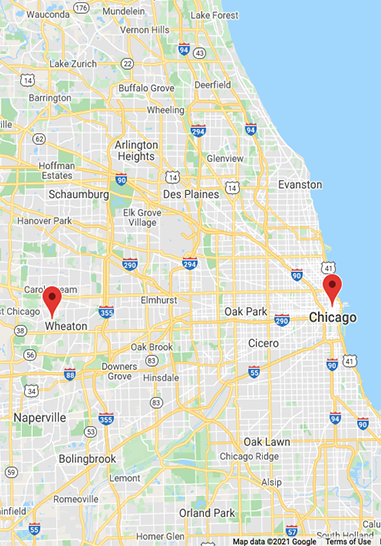"Judge: Buyer of Historic Building Didn't Inherit Trademark"
08.19.19
The Monday, August 19, 2019, edition of the Chicago Daily Law Bulletin reports on a trademark infringement lawsuit successfully defended by Aronberg Goldgehn attorneys Amy Gibson and Ben Haskin.
In “Judge: Buyer of historic building didn’t inherit trademark,” the author of the article, Patricia Manson, writes about the case of Long Grove Investments LLC v. Baldi Candy Co., which was dismissed by U.S. District Judge John Robert Blakey on August 7, 2019.
Aronberg Goldgehn represented defendant Baldi Candy Co. (“Baldi”).
Background
A real estate investment firm, Long Grove Investments LLC (“LGI”), bought a historic building in the Downtown Long Grove shopping district in September 2014.
From 1977 through 2011, Long Grove Confectionery Co. had leased that space to operate its Apple Haus bakery. In June 2013, two years after closing the Apple Haus bakery, Baldi acquired the confectionary’s business and assets.
At least some of the products sold at the bakery, including apple ciders and pies, included the term “Apple Haus” on their labels and packaging. The confectionary company also sold Apple Haus-branded pies at two of its other stores, as well as to wholesalers and at Long Grove’s annual outdoor festivals. The confectionary reopened in a new Long Grove location in February 2018, with the new store continuing to sell baked goods bearing the “Apple Haus” mark.
In its federal lawsuit filed in August 2018, LGI contended it acquired common law rights to the Apple Haus mark when it bought the former Apple Haus building. LGI alleged that Baldi was infringing on those rights.
Ruling
In his written opinion, Judge Blakey stated that Section 43(a)(1)A) of the federal Lanham Act allows parties to assert claims for trademark infringement of unregistered marks. However, plaintiffs asserting such claims must show that a protectable mark exists, that the plaintiff owns the mark and that the defendant’s use of the mark is likely to cause consumer confusion.
LGI’s infringement claim faltered on the ownership element. Judge Blakey explained that a party obtains a protectable right in a trademark “only through use of the mark in connection with its product.” That use, as Judge Blakey explained, must be “deliberate and continuous, not sporadic, casual or transitory.” And, “the party who first uses a mark owns that mark.”
LGI acknowledged that it never sold any goods or products at all. Thus, the Judge concluded that LGI could not demonstrate “use, or indeed any use, of the Apple Haus mark.” The Judge also highlighted that LGI and Baldi agreed that the confectionery company was the first to use the mark.
Judge Blakey rejected the argument that LGI obtained ownership of the Apple Haus mark by buying the building associated with it. Although some courts have held that trademark ownership may pass along with the title to a property in some circumstances ̶ such as where the original property owner showed that it was the first to use the mark and that it or the owners succeeding it continuously used the mark at the property ̶ those circumstances did not exist here. LGI was not the building’s first owner and the building’s original owner did not create the Apple Haus mark.
Instead, the confectionery company — a tenant in the building rather than an owner — “did so by, among other things, selling products bearing the Apple Haus [m]ark,” Judge Blakey wrote. For this reason, Baldi, as the confectionery company’s successor that continued to use the Apple Haus mark after it acquired the company, owned the mark. This was a total victory for Baldi.



